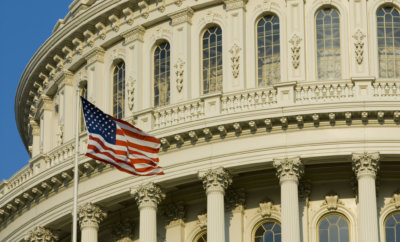Immigration
Almost Half of Canadians Want to See Decrease in Immigration Target: Survey

Windsor border in Ontario, Canada.
Photo: Bigstock
As many as 49 percent of Canadian respondents said they want to see the government's 2018 target of 310,000 immigrants reduced, according to a survey.
The people of Canada are divided over the number of immigrants to be allowed in the country. A latest survey has found that 49 percent of Canadian respondents wanted to see the federal government’s 2018 target of 310,000 immigrants reduced.
The survey, conducted by the Angus Reid Institute (ARI), polled 1,500 Canadian members of the Angus Reid Forum and found that 31 percent of them want the target to stay the same, while six percent wished to see more immigration. In 2014, 36 percent had favored reduction in the number of immigrants.
The Liberal Party government under Prime Minister Justin Trudeau set a target to bring a total of 310,000 new permanent residents to Canada in 2018, with plans to increase it every year and make it 340,000 yearly by 2020. The latest survey, however, shows the gap among people in the country about the government’s plan.
49% of Cdns say 310,000 new permanent residents in 2018 is too many:https://t.co/f8shpPFyQb pic.twitter.com/TbojPYHImX
— Angus Reid Institute (@angusreidorg) August 22, 2018
Immigration targets have increased from 260,000 in 2014 to 310,000 in 2018, and so has the number of Canadians who favor fewer foreigners entering the country, the report said. While 36 percent people wanted lower immigration levels in 2014, the number has increased to almost half (49%) now.
“For the first time in a while, we are seeing Canadians more inclined to say that we should be decreasing the amount of immigration, and fewer Canadians saying that we should stick with the status quo, in that we should keep those numbers levels or actually increase them,” Angus Reid executive director Shachi Kurl told CBC. “Against that backdrop, we’re actually seeing real immigration numbers rising,” she said, adding that the recent shift to preferring fewer immigrants could be because of increased irregular migration and refugees being allowed in Canada.
During the last four decades, over 50 percent of Canadians have said that immigration is either at the right level or should be increased, according to the report. The response in favor of immigration numbers came even when the immigration levels were seeing a consistent rise, beginning under Prime Minister Brian Mulroney’s conservative government in the 1980s. During this period, the number of people who wanted to see immigration levels decreased was fluctuating between 40 and 50 percent, showing that the matter has divided people for the last 40 years.
Canada has been struggling with an aging workforce and declining birth rate, which creates shortages of workforce in labor market and impacts the economy.
The institute also cited a recent report from the Conference Board of Canada, which suggested that if Canada cuts down the number of new immigrants, it would experience a huge shortage in labor force. It will also face more difficulty in bearing the expenses of social programs, and weaker economic growth.
“I don’t think the public fully understands or comprehends the numbers,” Chris Friesen, Director of settlement with the Immigrant Services Society of B.C Friesen, said to CBC. Citing accelerated retirement and declining birth rate, he added that Canada will require higher immigration to overcome the huge shortage of workers in country.
Immigrants coming to Canada can be categorized into three groups: economic class, family class and refugee or humanitarian class, according to ARI. In 2018, the “economic class” is expected to comprise about 57 percent of the newcomers, who come to Canada to work, including caregivers, skilled laborers, and professionals, while the “family class” is expected to consist of 28 percent new immigrants, who are sponsored by a relative who is already a Canadian citizen or permanent resident. About 15 percent of newcomers are expected to be from the “refugee” or “humanitarian class,” comprising people who are fleeing conflict or persecution abroad, the report added.




You must be logged in to post a comment Login